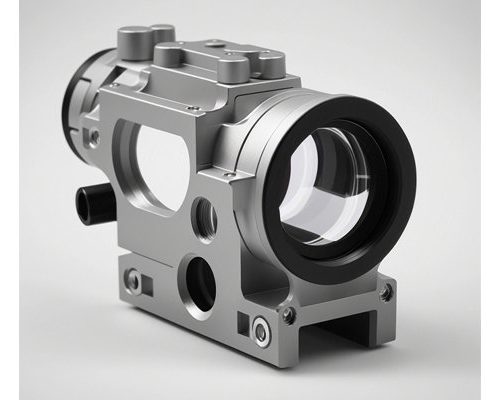In the world of optical tracking systems, precision is more than a requirement—it’s a necessity. Whether for advanced motion capture, industrial automation, or cutting-edge AR/VR devices, the components within these systems must operate flawlessly. Over the years, I’ve worked extensively with CNC machining to craft high-performance parts for optical tracking instruments. Let me take you through how this transformative technology drives precision, reliability, and scalability in this field.
The Demand for Precision in Optical Tracking Systems
Optical tracking relies on the seamless integration of various components, including lenses, housings, and mechanical parts. These systems work by detecting and processing light signals, making any inaccuracies a potential source of error. Here’s why precision matters:
- Signal accuracy: Misaligned or imprecise parts can distort light paths, degrading performance.
- Mechanical stability: Poorly machined components can lead to vibrations and instability.
- Durability: Subpar materials or machining methods reduce the lifespan of the system.
The more accurate the manufacturing process, the better the system performs. That’s why CNC machining has become a cornerstone for manufacturers in this industry.
How CNC Machining Elevates Optical Tracking Components
CNC machining offers unparalleled control over precision and design complexity, making it the go-to solution for optical tracking applications. Let’s break down its advantages:
1. Superior Dimensional Accuracy
When producing optical tracking components, dimensional tolerances can be as tight as ±0.005mm. This level of accuracy ensures perfect alignment and functionality.
At YL-Machining, we specialize in crafting:
- Lens mounts that guarantee optimal alignment of optical paths.
- Custom housings with precise internal features for sensitive sensors.
- Calibration fixtures that maintain exact reference points.
By meeting these tight tolerances, CNC machining eliminates potential alignment issues, resulting in seamless performance.
2. Complex Geometries for Modern Applications
Modern optical tracking systems require intricate part designs to accommodate advanced features. CNC machining, particularly with multi-axis setups, can handle these complexities effortlessly.
For example:
- 5-axis CNC machining enables the production of curved or angled surfaces, critical for reflective and refractive components.
- Micro-machining capabilities allow for detailed features like grooves, notches, or micro-holes.
This capability is essential for parts like beam splitters, which require both precise geometry and smooth finishes to manipulate light effectively.
3. Consistency in Mass Production
Optical tracking systems are widely used in industries ranging from healthcare to aerospace, creating a need for consistent, high-quality parts at scale. CNC machining ensures uniformity across production batches.
Whether producing 50 or 5,000 units, CNC machines guarantee that each part:
- Matches the design specifications exactly.
- Exhibits identical material and surface properties.
- Performs reliably in its application.
This level of repeatability is vital for industries where system failure is not an option.
4. Precision Surface Finishing for Light Optimization
Surface quality plays a critical role in optical tracking components, as imperfections can scatter light or introduce distortions. CNC machining allows for advanced finishing processes, such as:
- Polishing to create mirror-like surfaces for light reflection.
- Grinding for tight tolerances and smooth finishes.
- Anodizing or coating to enhance durability and reduce glare.
The result? High-performance parts that optimize light paths and improve overall system accuracy.
Material Versatility in Optical Tracking Systems
One of the strengths of CNC machining is its compatibility with diverse materials, allowing manufacturers to select the best option for their application:
- Aluminum for lightweight, corrosion-resistant housings.
- Stainless steel for durable and stable structural parts.
- Engineering plastics like PEEK or PMMA for non-conductive, transparent, or lightweight components.
This flexibility means that optical tracking systems can meet specific demands, from weight constraints to environmental resistance.
A Real-World Example: CNC Machining in Motion Capture Systems
Let me share a success story from YL-Machining. We worked with a client specializing in motion capture technology. Their challenges included:
- Producing lightweight yet durable parts for wearable tracking devices.
- Achieving flawless surface finishes to ensure accurate light detection.
- Scaling up production without compromising quality.
Here’s how CNC machining helped:
- We used aluminum alloys to create lightweight frames, reducing wearer fatigue.
- Applied polishing and anodizing to enhance reflectivity and durability.
- Leveraged 5-axis machining to achieve complex geometries for sensor mounts.
The final product exceeded expectations, delivering improved performance and a competitive edge in the market.
Why CNC Machining is Essential for Optical Tracking Manufacturers
If you’re in the optical tracking industry, you’ve likely faced challenges like:
- Inconsistent part quality leading to unreliable performance.
- Difficulty scaling production while maintaining precision.
- Limited material or design options with traditional methods.
CNC machining addresses all these issues, offering a reliable and scalable solution.
Long-Term Benefits of CNC Machining for Optical Tracking
While CNC machining requires an upfront investment, the long-term benefits are substantial:
- Cost savings from reduced waste and rework.
- Enhanced performance through precise, high-quality components.
- Customer satisfaction with products that are durable and reliable.
For manufacturers of optical tracking systems, it’s an investment in innovation and reliability.
Conclusion: The Future of Precision Manufacturing
As optical tracking systems evolve, the demand for precision and performance will only grow. CNC machining is uniquely equipped to meet these needs, providing the accuracy, consistency, and material versatility required for success.
At YL-Machining, we’re proud to be at the forefront of this transformation. Ready to elevate your optical tracking components? Share your requirements or challenges, and let’s create a solution together.



